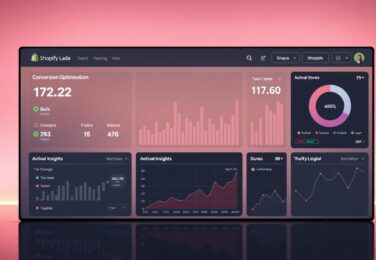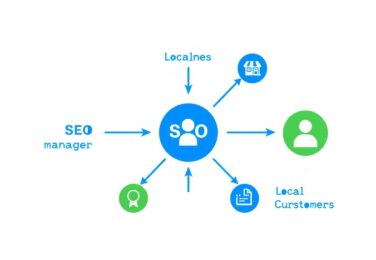The Ultimate guide for On-Page SEO Optimisation

Table of Content
As an Aussie business owner, you know the importance of having a strong online presence. But did you realise that optimising your website for search engines is the key to unlocking that potential? Welcome to your ultimate guide on mastering on-page SEO optimisation. Get ready to transform your website into a digital powerhouse that attracts more Aussie customers than ever before.
I know firsthand how challenging the world of SEO can be. When I first started my own small business, I spent countless hours trying to decipher the complex algorithms and technical jargon. But eventually, I cracked the code and watched as my website skyrocketed to the top of the search results. Now, I’m here to share those hard-earned insights with you.
Key Takeaways
- Discover the essential on-page SEO elements that drive visibility and traffic
- Learn how to conduct effective keyword research to target your Aussie audience
- Uncover content optimisation strategies to boost engagement and conversions
- Optimise your website’s technical aspects for improved speed and mobile-friendliness
- Leverage internal linking and site structure to enhance user experience
Ready to see real results or talk to a professional? Talk to us on 0298344119 or hello@defyn.com.au.
Mastering Keyword Research for On-Page SEO Optimisation
Crafting a winning on-page SEO strategy begins with thorough keyword research. By understanding the search intent and identifying high-value keywords that resonate with your Australian audience, you can optimise your content to attract the right traffic and boost your online visibility.
Understanding Search Intent
Before you dive into keyword research, it’s crucial to grasp the concept of search intent. Search intent refers to the underlying purpose behind a user’s search query. By understanding what your potential customers are looking for, you can tailor your content to meet their specific needs and expectations.
To uncover search intent, consider the following questions:
- Is the user searching for informational, transactional, or navigational purposes?
- What specific problems or queries are they trying to solve?
- What language and phrasing are they using to express their search?
Identifying High-Value Keywords
With a solid understanding of search intent, you can now focus on identifying high-value keywords that will drive targeted traffic to your website. Here are some strategies to help you find the most relevant and lucrative keywords for your business:
- Use keyword research tools to uncover search volume, competition, and relevance data for your target keywords.
- Analyse your competitors’ content to see which keywords they are targeting and how you can outperform them.
- Leverage customer feedback, surveys, and online forums to understand the language and queries your Aussie audience is using.
- Consider long-tail keywords that are more specific and may have lower competition but higher intent.
By mastering keyword research and aligning your content with your audience’s search intent, you’ll be well on your way to driving high-value traffic and achieving better on-page SEO results for your Australian business.
Ready to see real results or talk to a professional? Talk to us on 0298344119 or hello@defyn.com.au.
On Page SEO Optimisation: Content Optimisation Strategies
Crafting optimised content is the cornerstone of boosting your website’s visibility in search engine results. In this section, you’ll discover the best practices for fine-tuning your page titles, meta descriptions, header tags, and images to improve your rankings. Moreover, you’ll learn how to structure your site and implement effective internal linking to enhance the user experience and search engine crawlability.
Mastering Page Titles and Meta Descriptions
Your page title and meta description are the first things users see when your website appears in search engine results. Ensure these elements are compelling, informative, and keyword-rich to entice clicks. Optimise your page titles to be concise, descriptive, and include your target keywords. Craft meta descriptions that provide a succinct summary of the page’s content and encourage users to visit your site.
Optimising Header Tags
Header tags, ranging from h1 to h6, play a crucial role in structuring your content and signalling its importance to search engines. Use the h1 tag for your main page heading, followed by h2, h3, and so on, to organise your content in a logical hierarchy. Incorporate your target keywords naturally within these header tags to improve your on-page SEO.
Enhancing Image Optimisation
Images are not only visually appealing but can also contribute to your website’s SEO. Optimise your images by using descriptive file names, adding relevant alt text, and compressing the file sizes to improve page loading speeds. This will help search engines better understand the content of your images and increase their visibility in image search results.
Improving Site Structure and Internal Linking
The structure of your website and the internal links between pages play a significant role in search engine crawlability and user experience. Organise your content into a clear, intuitive hierarchy, with each page accessible through logical navigation. Implement strategic internal linking to guide users and search engines through your site, highlighting the most important pages and related content.
| On-Page SEO Optimisation Element | Best Practices |
|---|---|
| Page Titles |
|
| Meta Descriptions |
|
| Header Tags |
|
| Image Optimisation |
|
| Site Structure and Internal Linking |
|
Remember, on-page SEO optimisation is an ongoing process. Continuously monitor your website’s performance, analyse the data, and make adjustments to your content and site structure to ensure your pages are optimised for both users and search engines. Ready to see real results or talk to a professional? Talk to us on 0298344119 or hello@defyn.com.au.
Conclusion
Implementing the on-page SEO strategies outlined in this guide will help you unlock your website’s full potential. By mastering keyword research, optimising your content, and enhancing your site structure, you can improve your visibility on Australian search engine results pages and attract more engaged customers from Down Under.
Ready to see real results or talk to a professional? Reach out to the team at Defyn on 0298344119 or hello@defyn.com.au. They’ll be happy to discuss how you can leverage on-page SEO optimisation to boost your website’s visibility, drive higher rankings, and attract more Aussie visitors.
With the right approach, your online presence can soar, connecting you with the customers who matter most. Take the first step towards on-page SEO success and let’s get started today.










